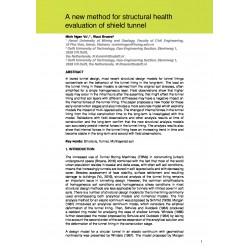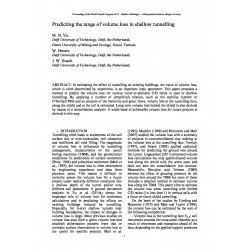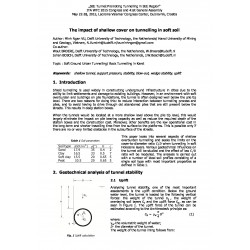No document
Search & filter
Search for a publication
Search & filter
List of products by author: M. N. Vu
-
A new method for structural health evaluation of shield tunnel
Abstract: In bored tunnel design, most recent structural design models for tunnel linings concentrate on the behaviour of the tunnel lining in the long-term. The load on the tunnel lining in these models is derived from the original soil stresses, often simplified for a single homogeneous layer. Field observations show that higher loads may occur in the initial hours after the assembly, that might effect...
0,00 € -
Predicting the range of volume loss in shallow tunnelling
Abstract: In estimating the effect of tunnelling on existing buildings, the value of volume loss, which is often determined by experience, is an important input parameter. This paper proposes a method to predict the volume loss for various cover-to-diameter C/D ratios in case of shallow tunnelling. By applying a number of (empirical) relation, such as the stability number of O’Reilly(1988) and an...
0,00 € -
The impact of shallow cover on tunnelling in soft soil
Abstract: Shield tunnelling is used widely in constructing underground infrastructure in cities due to the ability to limit settlements and damage to existing buildings. However, in an environment with soft overburden and buildings on pile foundations, the tunnel is often designed well below the pile tip level. There are two reasons for doing this: to reduce interaction between tunnelling process and...
0,00 €



